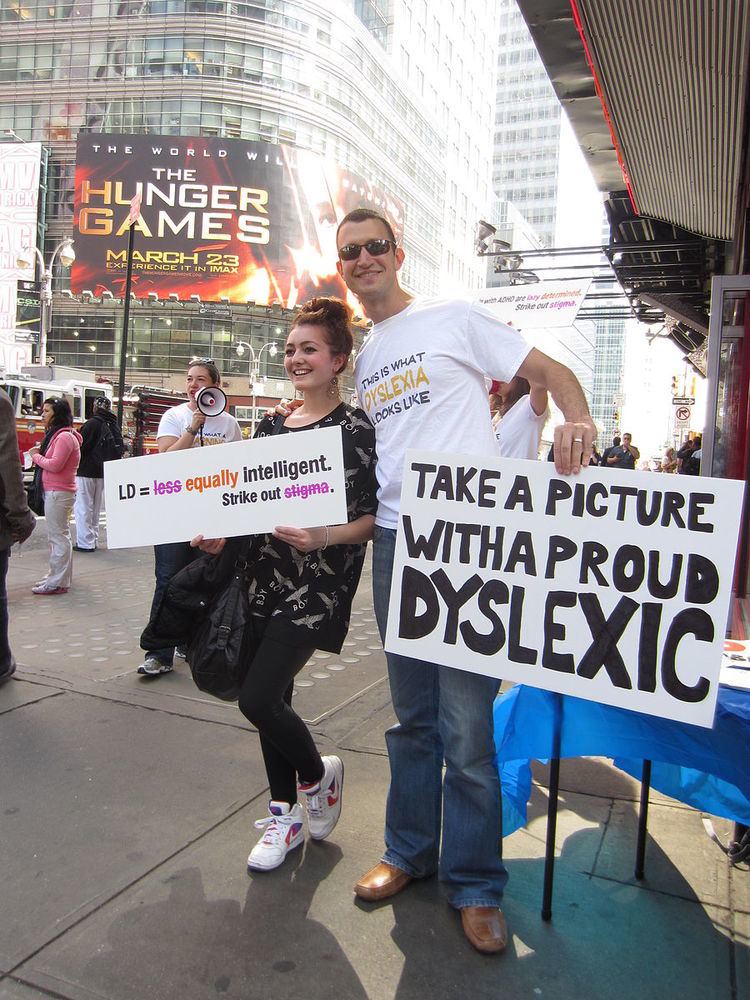 | ||
Invisible disabilities are disabilities that are not immediately apparent. For instance, some people with visual or auditory disabilities who do not wear glasses or hearing aids, or discreet hearing aids, may not be obviously disabled. Some people who have vision loss may wear contact lenses. A sitting disability is another category of invisible impairments; sitting problems are usually caused by chronic back pain. Those with joint problems or chronic pain may not use mobility aids on some days, or at all. Most people with RSI move in a 'normal' and inconspicuous way, and are even encouraged by the medical community to be as active as possible, including playing sports; yet those people can have dramatic limitations in how much they can type, write or how long they can hold a phone or other objects in their hands.
Contents
Invisible disabilities are chronic illnesses and conditions that significantly impair normal activities of daily living. In the United States, 96% of people with chronic medical conditions show no outward signs of their illness, and 10% experience symptoms that are considered disabling.
Impact
Invisible disabilities, also called "hidden disabilities", can hinder a person's efforts to go to school, work, socialize, and more. Although the disability creates a challenge for the person who has it, the reality of the disability can be difficult for others to recognize or acknowledge. Others may not understand the cause of the problem, if they cannot see evidence of it in a visible way. Students with cognitive impairments find it difficult to organize and complete school work, but teachers who are unaware of the reason for a student's difficulties, can become impatient:
I recently met Grace, a woman who had a traumatic brain injury when she was sixteen years old. She was in a car accident, an all too common occurrence. An accident occurs, the head hits a part of the car and internal damage to the brain results, ranging from mild to severe. Grace shows no outside cues of brain damage. There are no visible cues of her head injury. Grace's walking, vision and physical reflexes look "normal." [...] People look at Grace and assume she is fine and then react to her difficulty as if she is being lazy or choosing to be obstinate. Teachers' judgments of Grace have been based on assumptions made from Grace's physical appearance.
A disability that may be visible in some situations may not be obvious in others, which can result in a serious problem. For example, a plane passenger who is deaf may be unable to hear verbal instructions given by a flight attendant. It is for this reason that travellers with a hidden disability are advised to inform the airline of their need for accommodation before their flight:
Once, flying to Washington shortly after 9/11, I didn’t hear the announcement that absolutely no one was to get out of their seat for the last 30 minutes of the flight. Normally, I get up to use the washroom 20 minutes before landing. If the nice stewardess had not remembered me and come over to my seat, crouched down to my eye level, and told me that if I had to use the washroom, I had better use it right now, who knows what might have happened. I later learned the air marshals on board would have thrown a blanket on me and wrestled me to the floor.
Some employees with an invisible disability choose not to disclose their diagnosis with their employer, due to social stigma directed at people with disabilities, either in the workplace or in society in general. This may occur when a psychiatric disability is involved, or a number of other medical conditions that are invisible. Researchers in the human resources field may need to take this non-disclosure into account when carrying out studies.
Prevalence in the United States
About 10% of Americans have a medical condition which could be considered an invisible disability. Nearly one in two Americans (133 million) has a chronic medical condition of one kind or another. However, most of these people are not actually disabled, as their medical conditions do not impair normal activities.
96% of people with chronic medical conditions live with a condition that is invisible. These people do not use a cane or any assistive device and act as if they didn't have a medical condition. About a quarter of them have some type of activity limitation, ranging from mild to severe; the remaining 75% are not disabled by their chronic conditions.
Legal protection
Those with invisible disabilities are protected by national and local disability laws, such as the Americans with Disabilities Act in the US. The Rehabilitation Act of 1973 has been amended several times such that the definition of "handicapped" includes the statement, "any person who... (C) is regarded as having such an impairment" .
This particular defining point of "handicapped" puts the assessment of impairment in the hands of observers who may or may not regard others as having an impairment. For people with disabilities, invisible or not, this creates a space for discriminatory practices which stem from the observer’s perception of who is disabled and who is not.
Responses
A growing number of organizations, governments, and institutions are implementing policies and regulations to accommodate persons with invisible disabilities. Governments and school boards have implemented screening tests to identify students with learning disabilities, as well as other invisible disabilities, such as vision or hearing difficulties, or problems in cognitive ability, motor skills, or social or emotional development. If a hidden disability is identified, resources can be used to place a child in a special education program that will help them progress in school.
